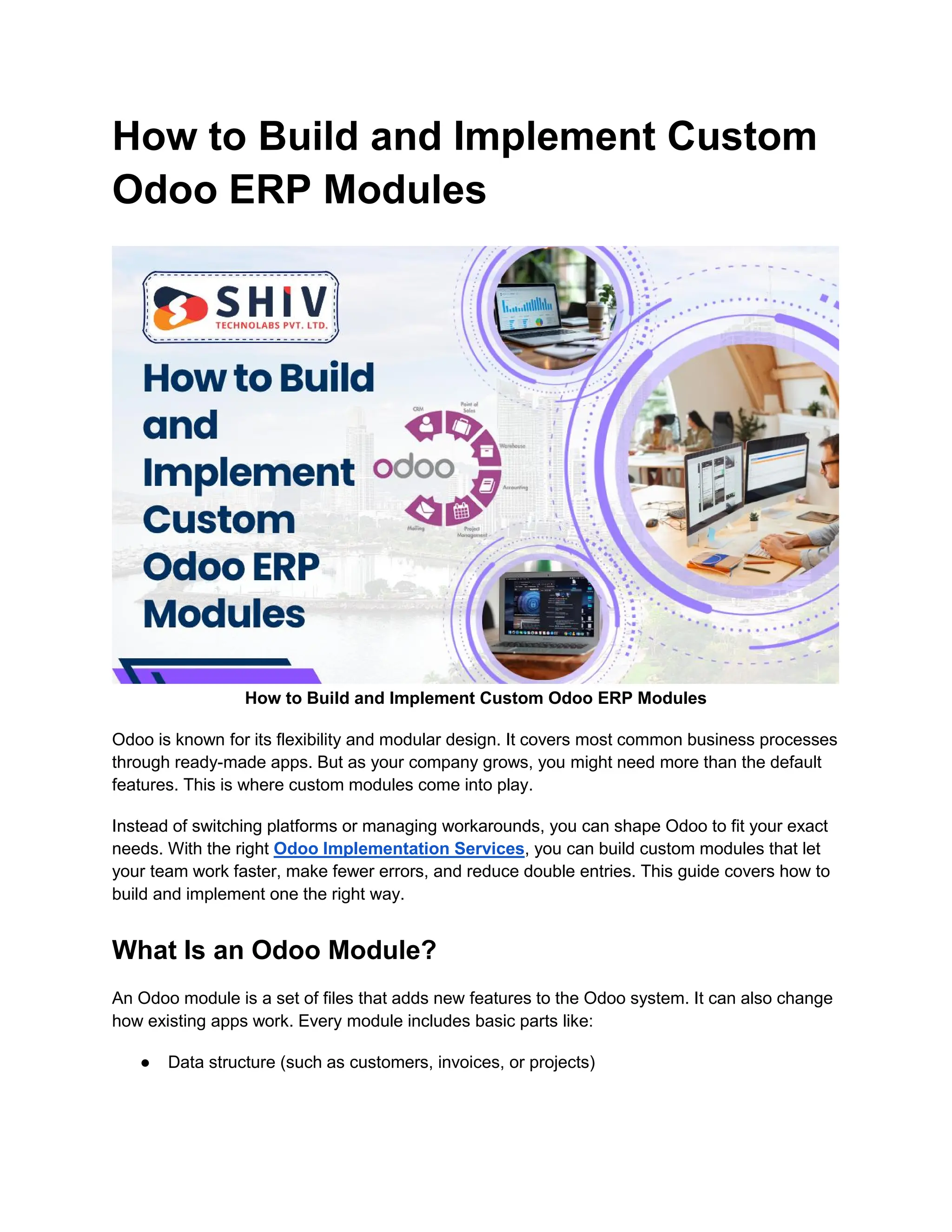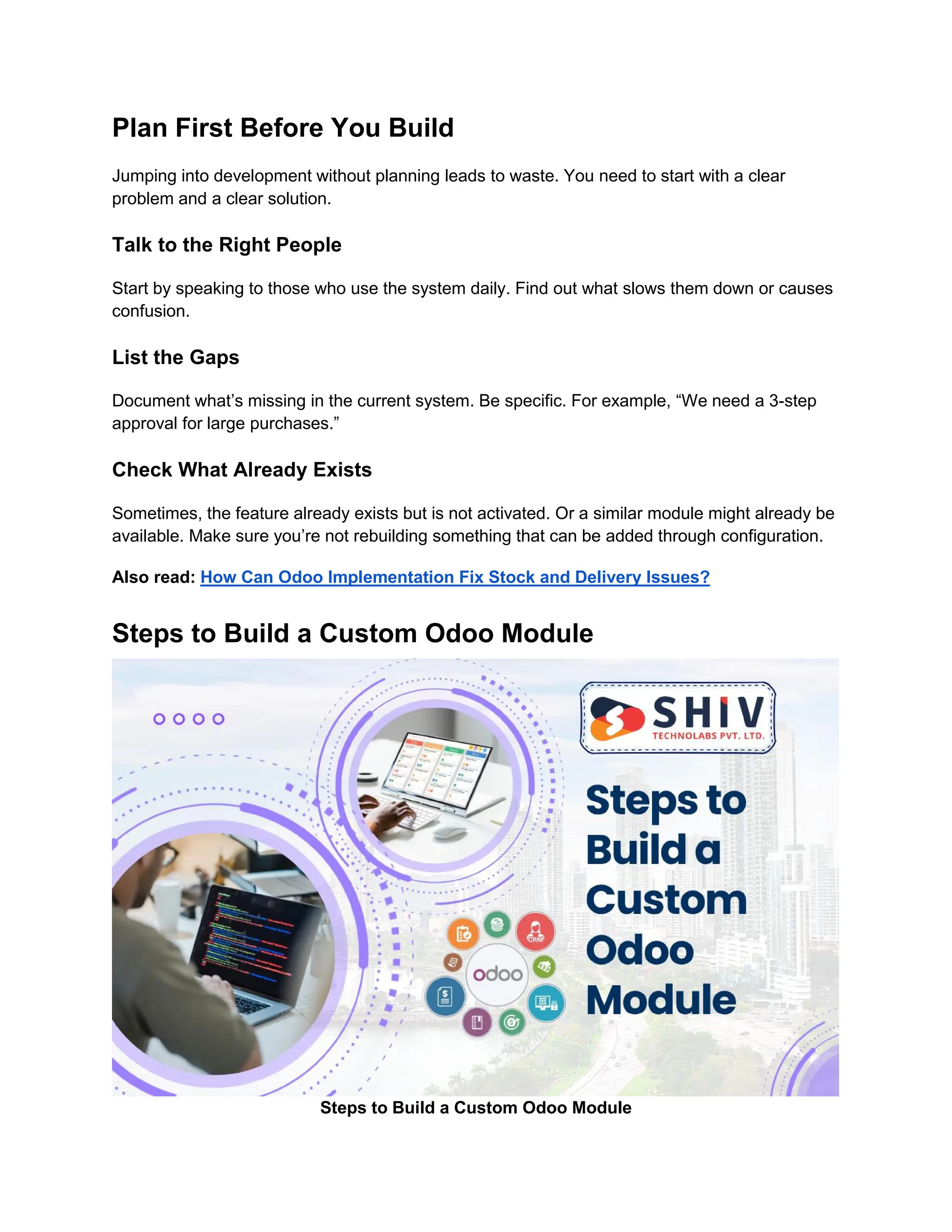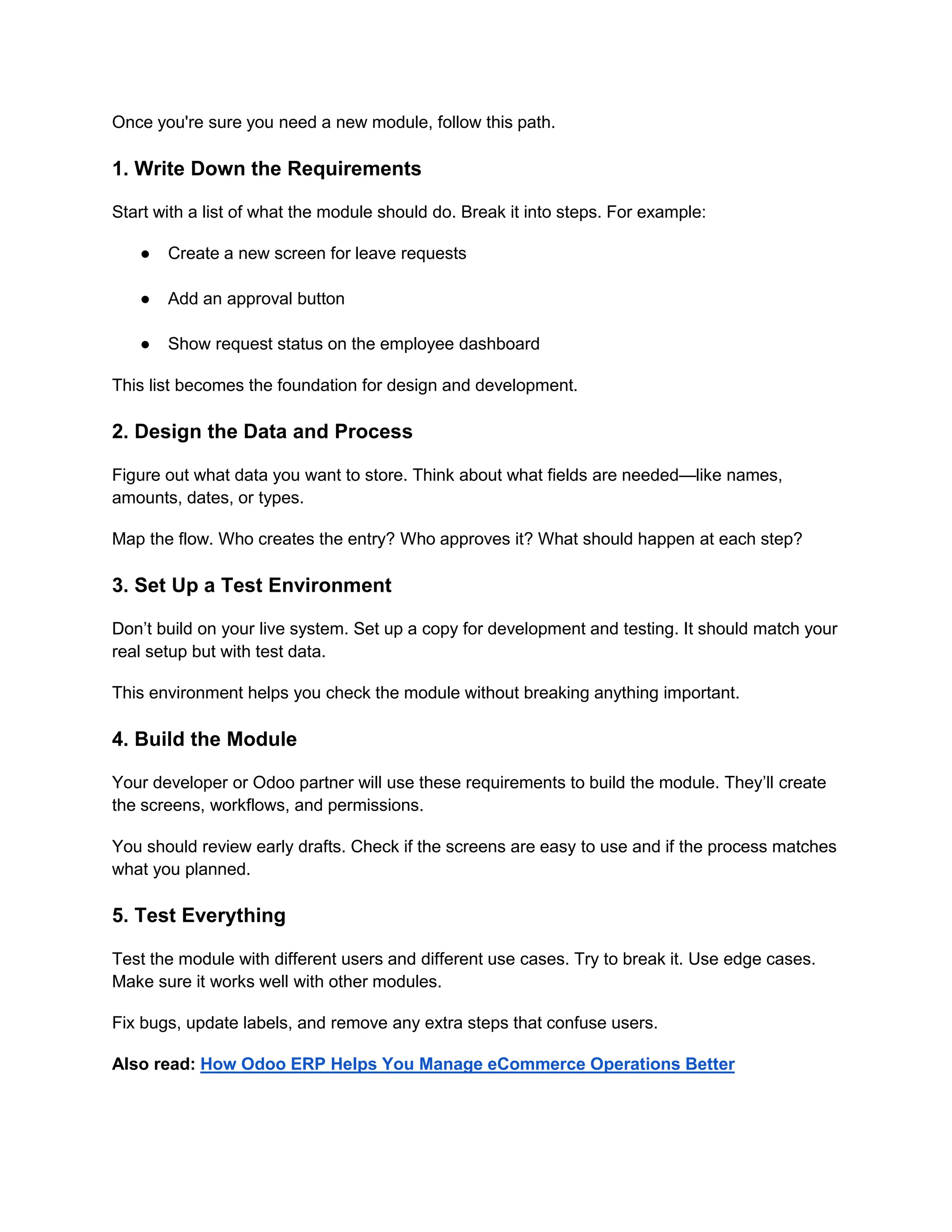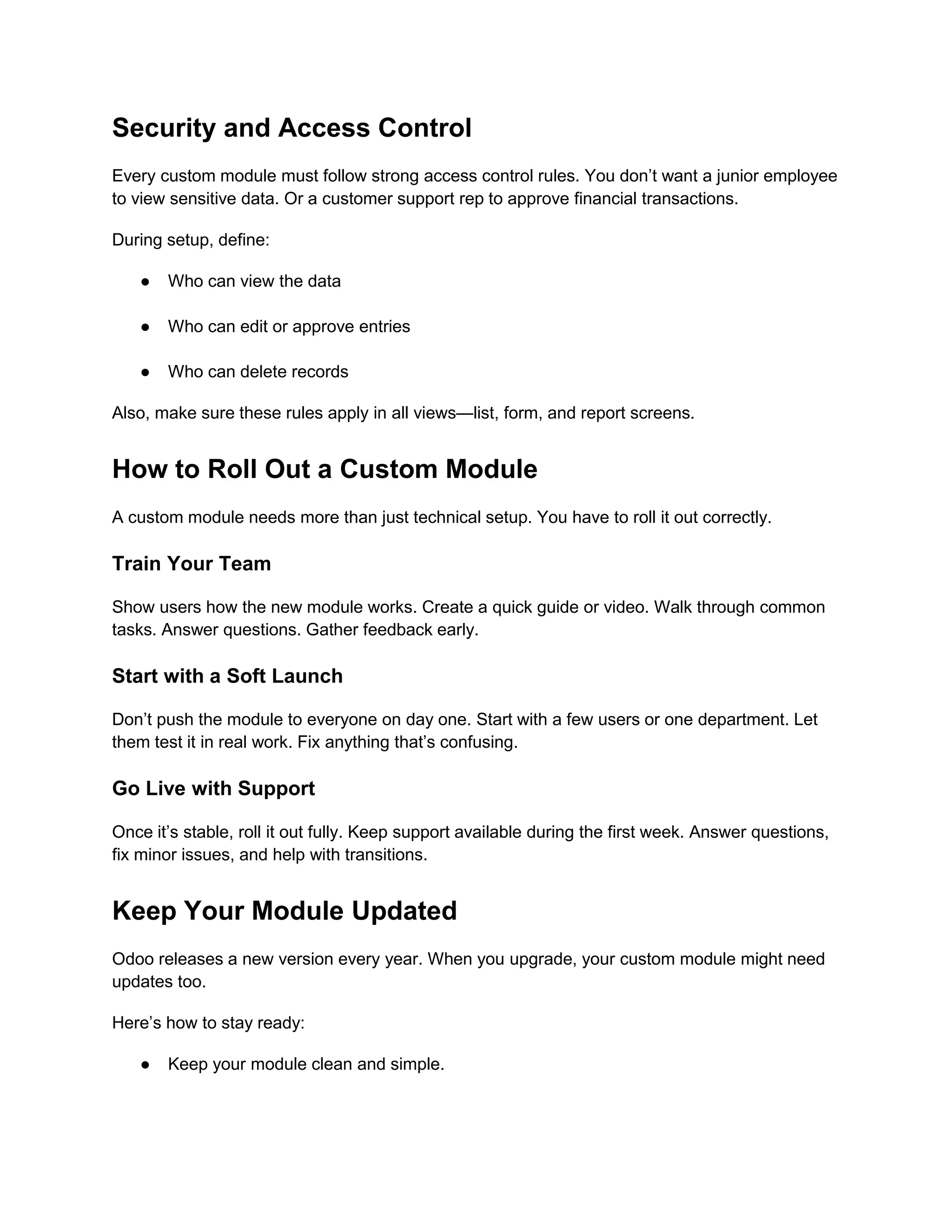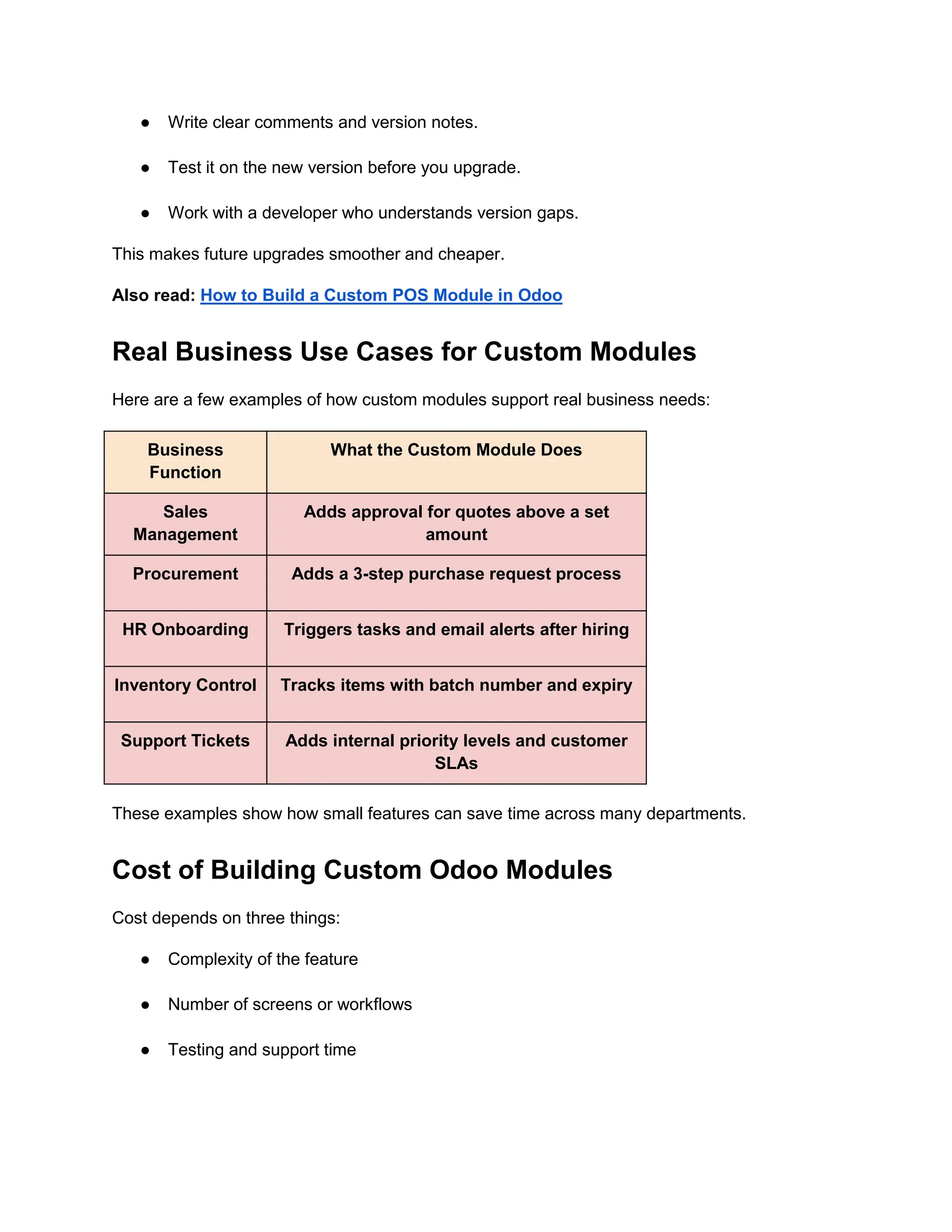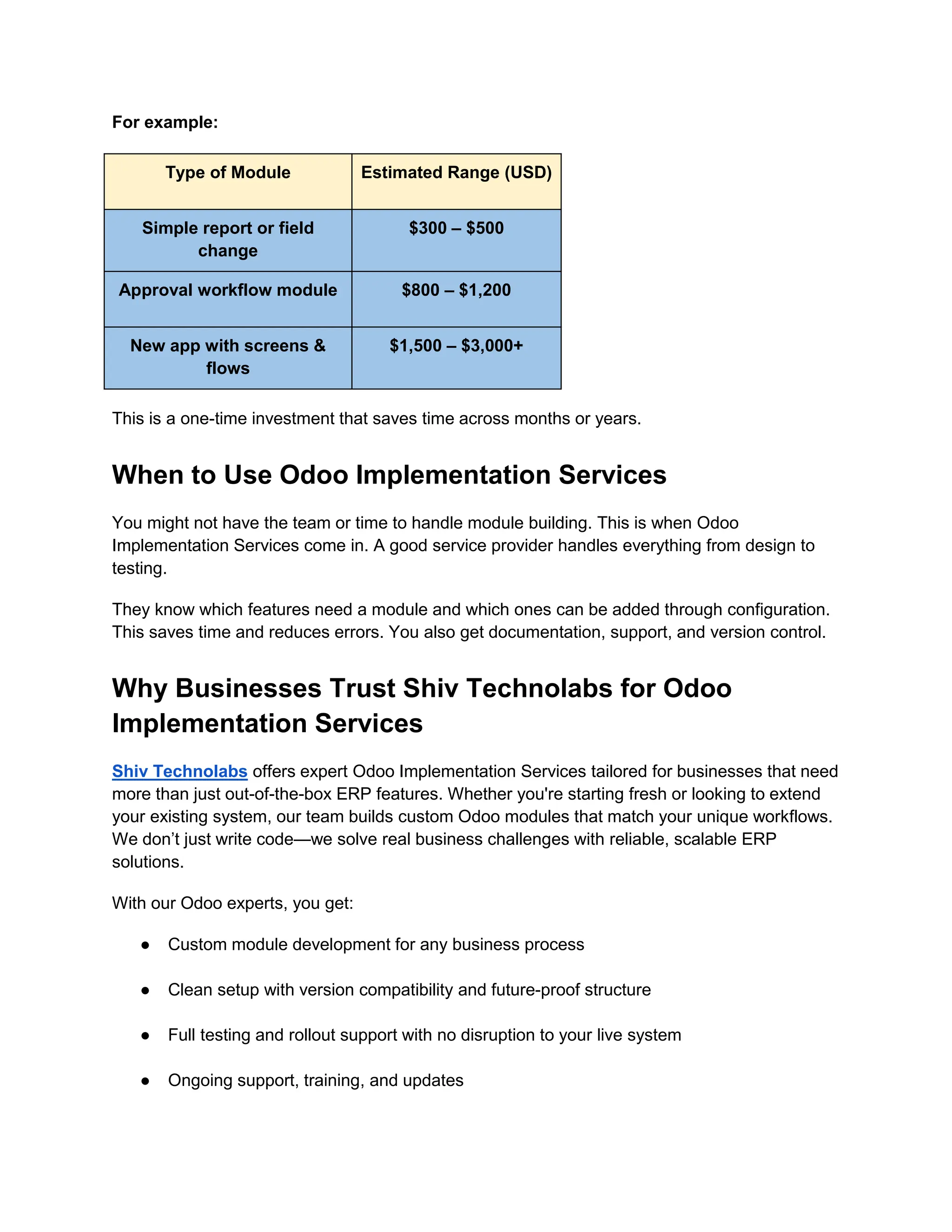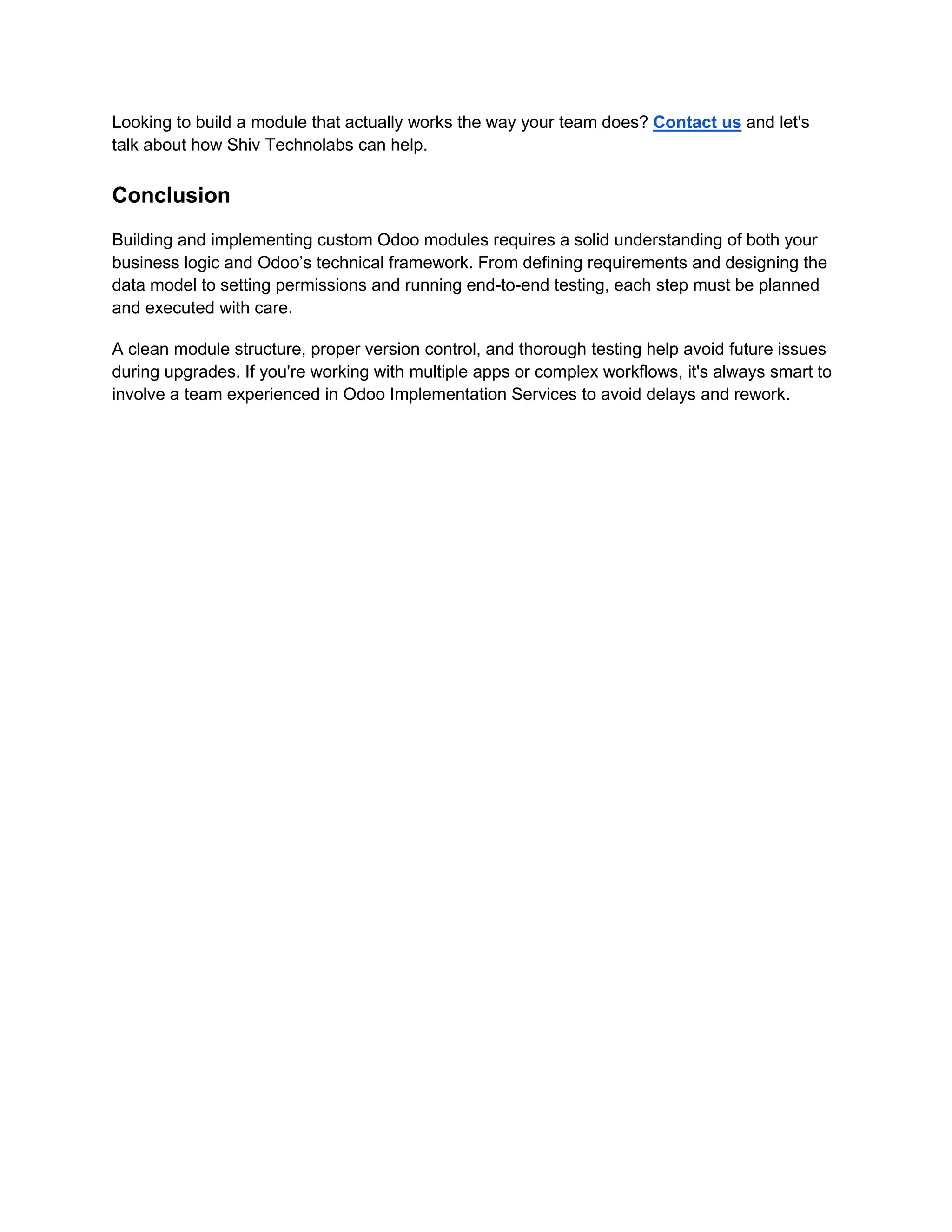This blog offers a clear guide on how to build and implement custom Odoo ERP modules. It explains each technical step—from defining business needs to writing Python code, setting up models, and connecting with Odoo’s backend.
You’ll also get insights into views, menus, and access controls. Whether you're new to Odoo or planning a system upgrade, this post simplifies the entire custom Odoo ERP modules process without the fluff. Perfect for developers and business teams alike.
#CustomOdooERPModules
